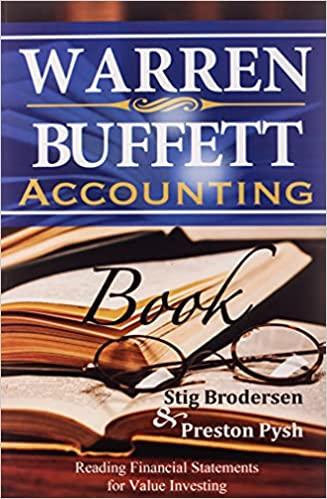Answered step by step
Verified Expert Solution
Question
1 Approved Answer
1 50 Points Group Assignment (50 marks) On January 1, Year 3, the Pen Company purchased 80% of the outstanding voting shares of the Silk
1 50 Points Group Assignment (50 marks) On January 1, Year 3, the Pen Company purchased 80% of the outstanding voting shares of the Silk Company for $1.6 million in cash. On that date, Silks balance sheet and the fair values of its identifiable assets and liabilities were as follows: Carrying Value Fair Value Cash $ 25,000 $ 25,000 Accounts receivable 310,000 290,000 Inventories 650,000 600,000 Plant and equipment (net) 2,015,000 2,050,000 Total assets $3,000,000 Current liabilities $300,000 300,000 Long-term liabilities 1,200,000 1,100,000 Common shares 500,000 Retained earnings 1,000,000 Total liabilities and shareholders equity $3,000,000 On January 1, Year 3, Silks plant and equipment had a remaining useful life of 8 years. Its long-term liabilities matured on January 1, Year 7. Goodwill, if any, is to be tested yearly for impairment. The balance sheets as on December 31, Year 9, for the two companies were as follows: BALANCE SHEETS As on December 31, Year 9 Pen Silk Cash $500,000 $ 40,000 Accounts receivable 1,700,000 500,000 Inventories 2,300,000 1,200,000 Plant and equipment, net 8,200,000 4,000,000 Investment in Silk, at cost 1,600,000 Land 700,000 260,000 Total assets $15,000,000 $6,000,000 Current liabilities $600,000 $200,000 Long-term liabilities 3,000,000 3,000,000 Common shares 1,000,000 500,000 Retained earnings 10,400,000 2,300,000 Total liabilities and shareholders equity $15,000,000 $6,000,000 Additional Information The inventories of both companies have a maximum turnover period of one year. Receivables have a maximum turnover period of 62 days. On July 1, Year 7, Pen sold a parcel of land to Silk for $100,000. Pen had purchased this land in Year 4 for $150,000. On September 30, Year 9, Silk sold the property to another company for $190,000. During Year 9, $2 million of Pens sales were to Silk. Of these sales, $500,000 remains in the December 31, Year 9, inventories of Silk. The December 31, Year 8, inventories of Silk contained $312,500 of merchandise purchased from Pen. Pens sales to Silk are priced to provide it with a gross profit of 20%. Pen and Silk reported net income of $1,000,000 and $400,000, respectively, for Year 9. During Year 9, $1.5 million of Silks sales were to Pen. Of these sales, $714,280 remains in the December 31, Year 9, inventories of Pen. The December 31, Year 8, inventories of Pen contained $857,140 of merchandise purchased from Silk. Silks sales to Pen are priced to provide it with a gross profit of 30%. Dividends declared on December 31, Year 9, were as follows: Pen $350,000 Silk 100,000 Goodwill impairment tests resulted in losses of $52,200 in Year 4 and $8,700 in Year 9. Assume a 40% tax rate for both companies and that dividends have not yet been paid. Required Calculate acquisition differential. (3 marks) Calculate goodwill if any. (3 marks) Calculate acquisition non-controlling interests. (2 marks) Calculate amortization schedule of required assets and liabilities. (5 marks) Calculate intercompany profit/loss after tax. (5 marks) Calculate consolidated retained earnings at January 1, Year 9. (7 marks) Calculate consolidated net income at December 31, Year 9. (10 marks) Calculate consolidated non-controlling interests at December 31, Year 9. (3 marks) Prepare the balance sheet for Year 9. (12 marks)
Step by Step Solution
There are 3 Steps involved in it
Step: 1
This question involves multiple steps in calculating various aspects of the business combination between Pen Company and Silk Company including acquisition differentials goodwill noncontrolling intere...
Get Instant Access to Expert-Tailored Solutions
See step-by-step solutions with expert insights and AI powered tools for academic success
Step: 2

Step: 3

Ace Your Homework with AI
Get the answers you need in no time with our AI-driven, step-by-step assistance
Get Started


